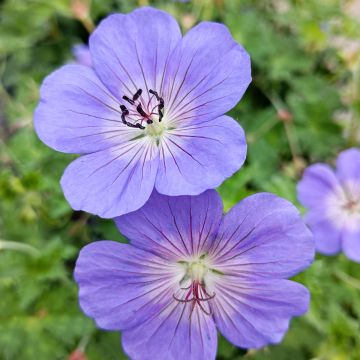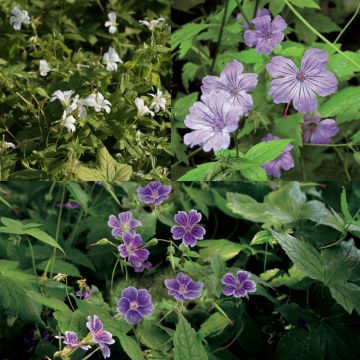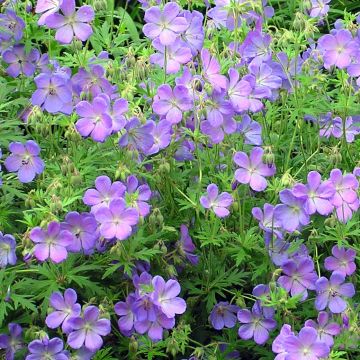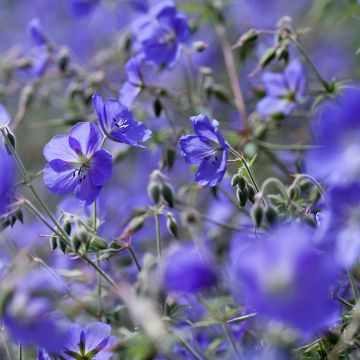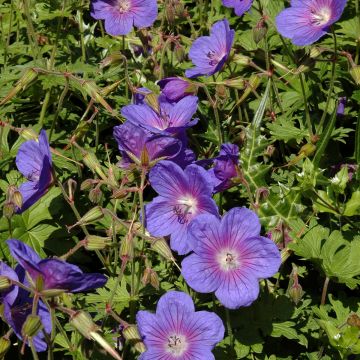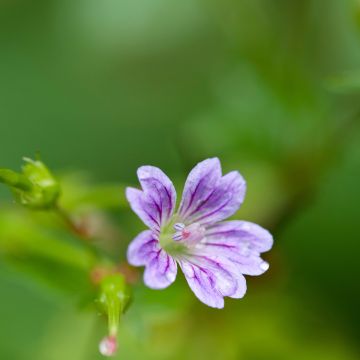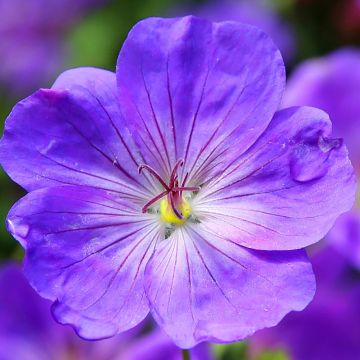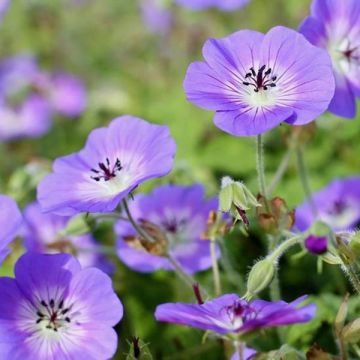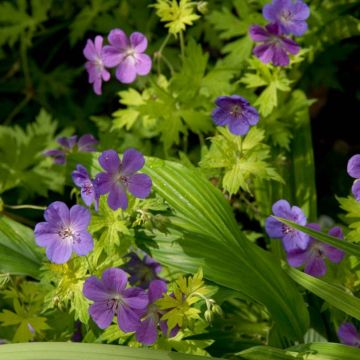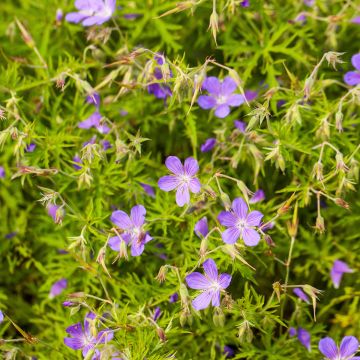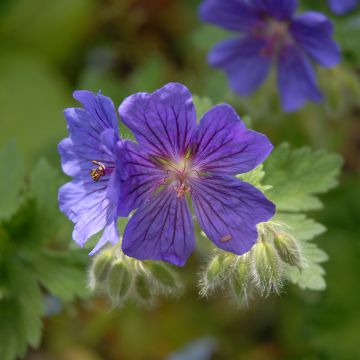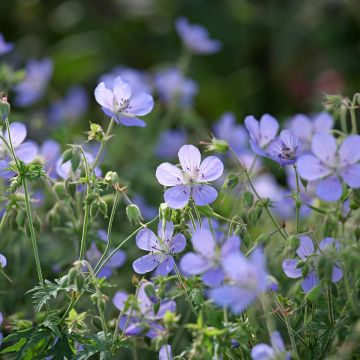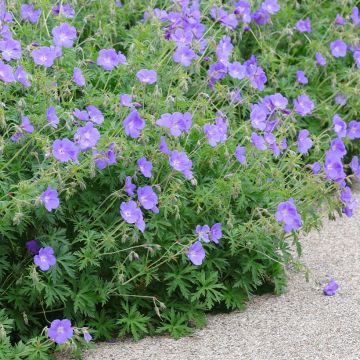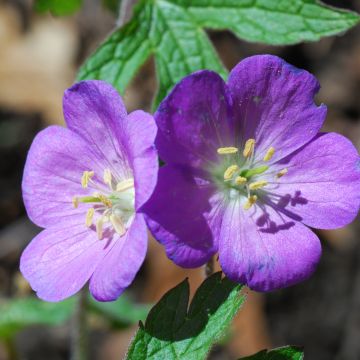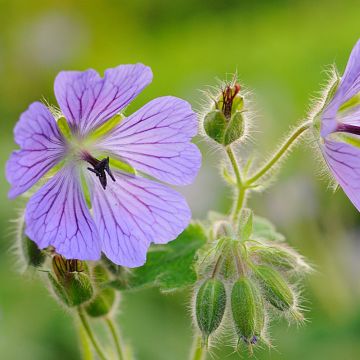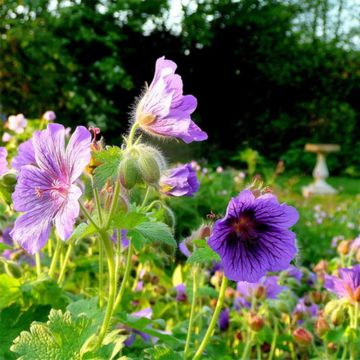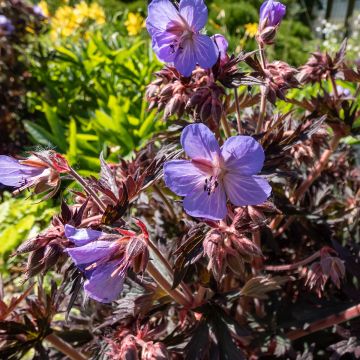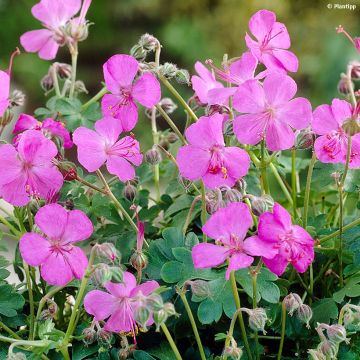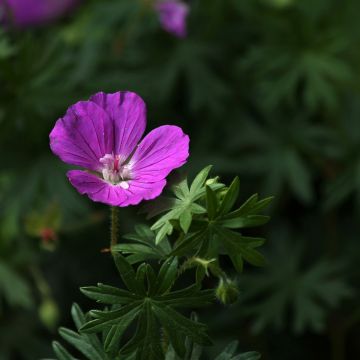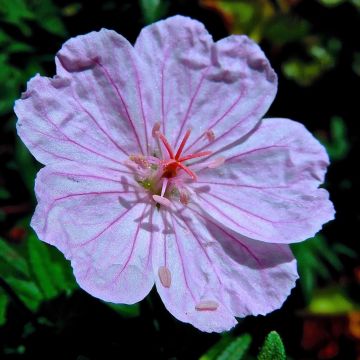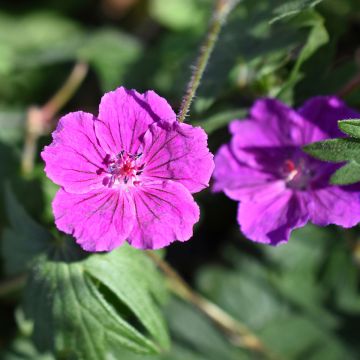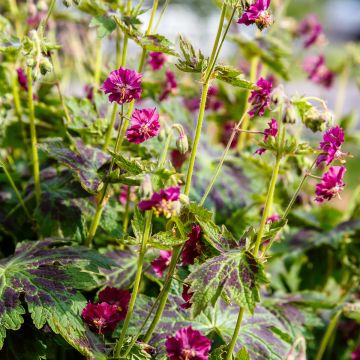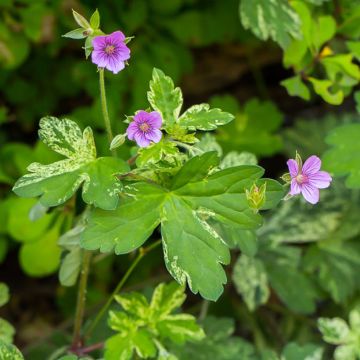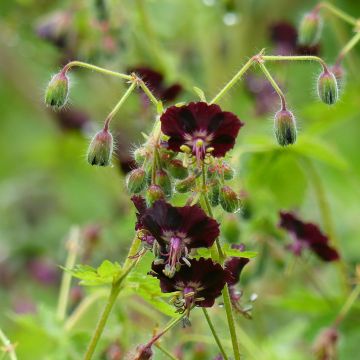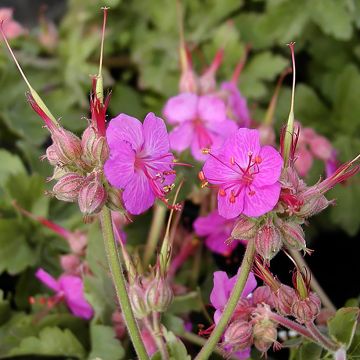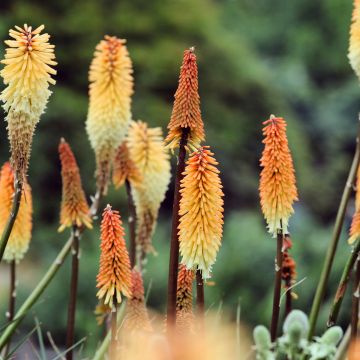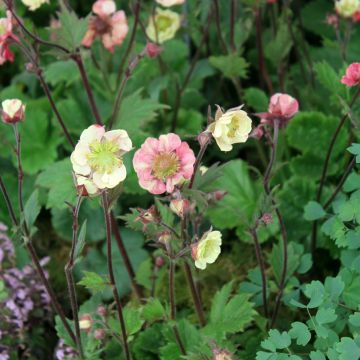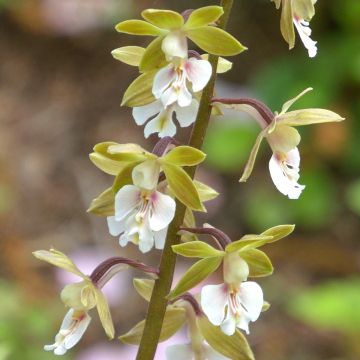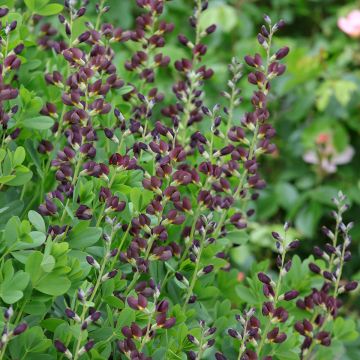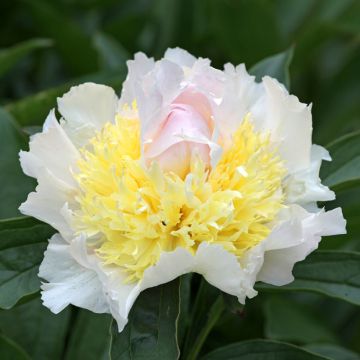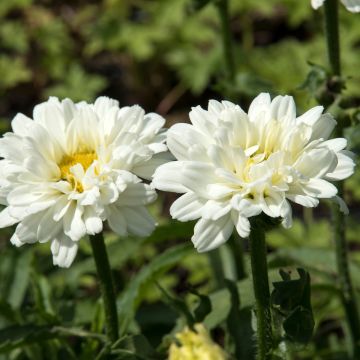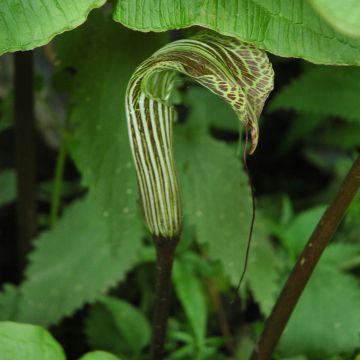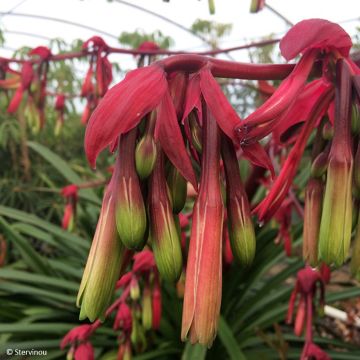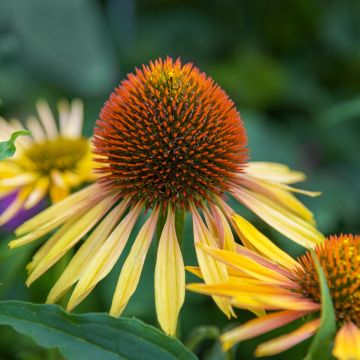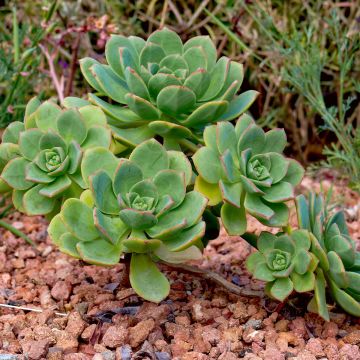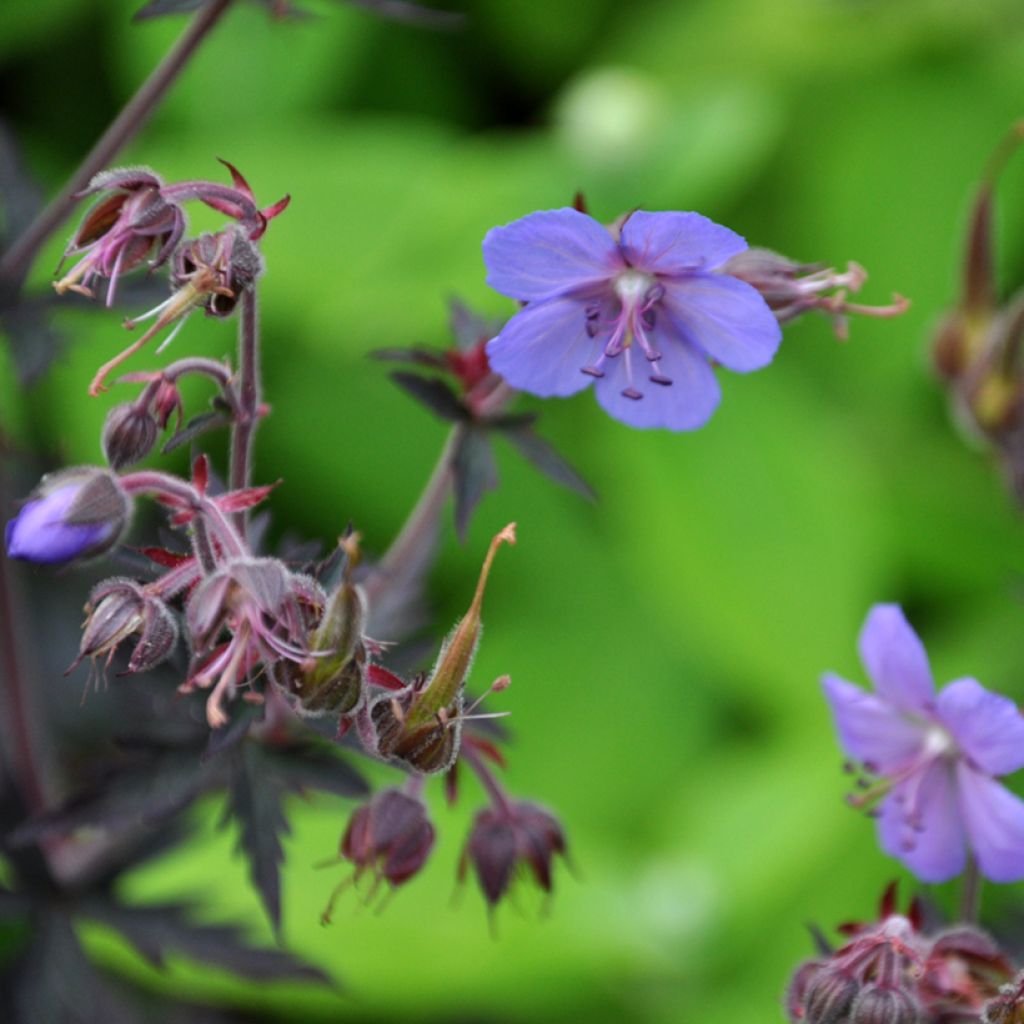

Geranium pratense Dark Reiter
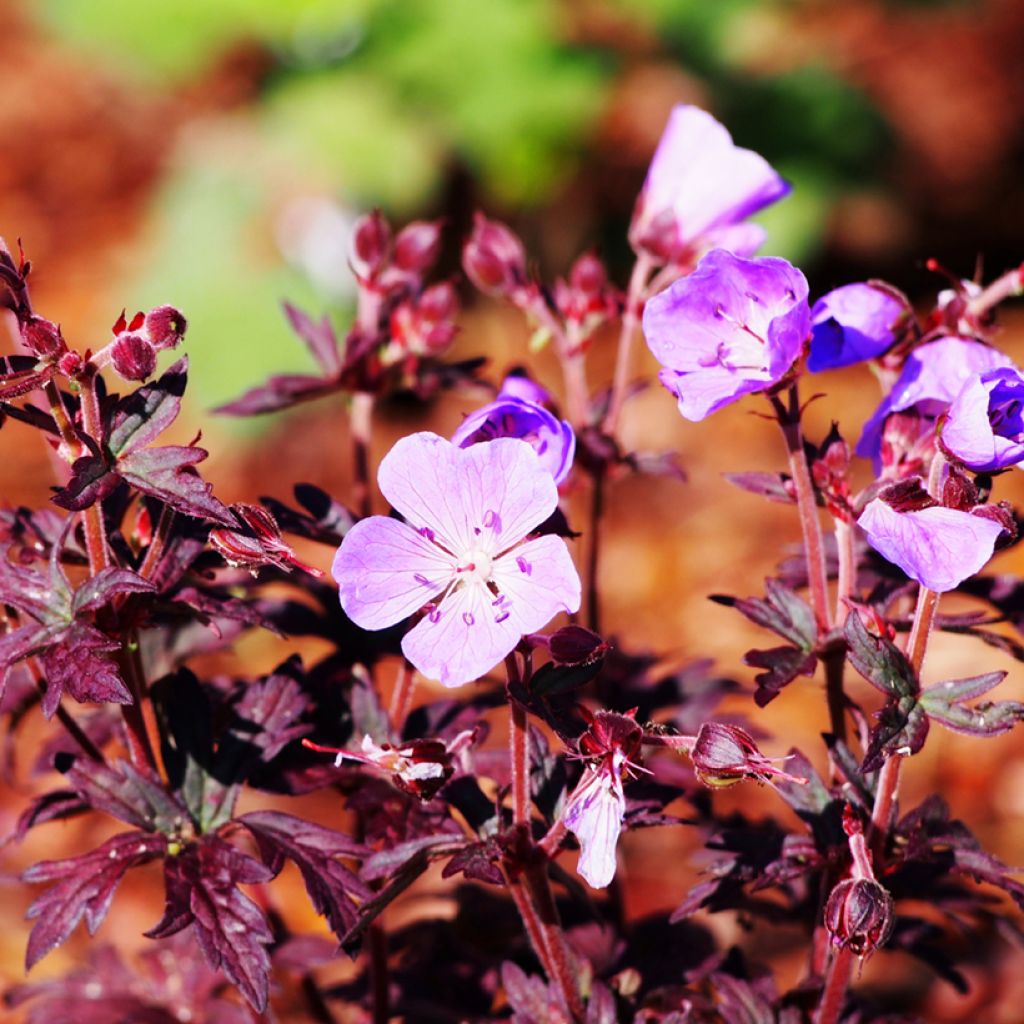

Geranium pratense Dark Reiter
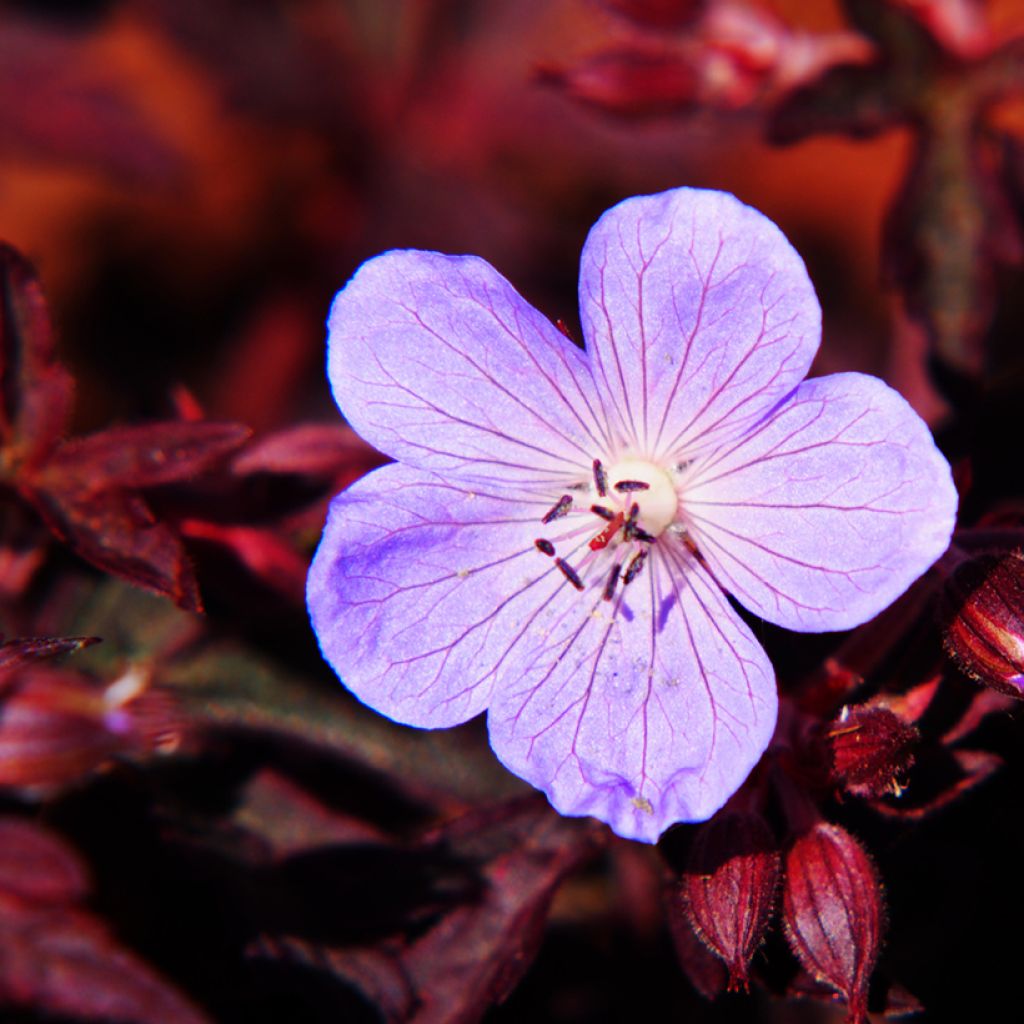

Geranium pratense Dark Reiter
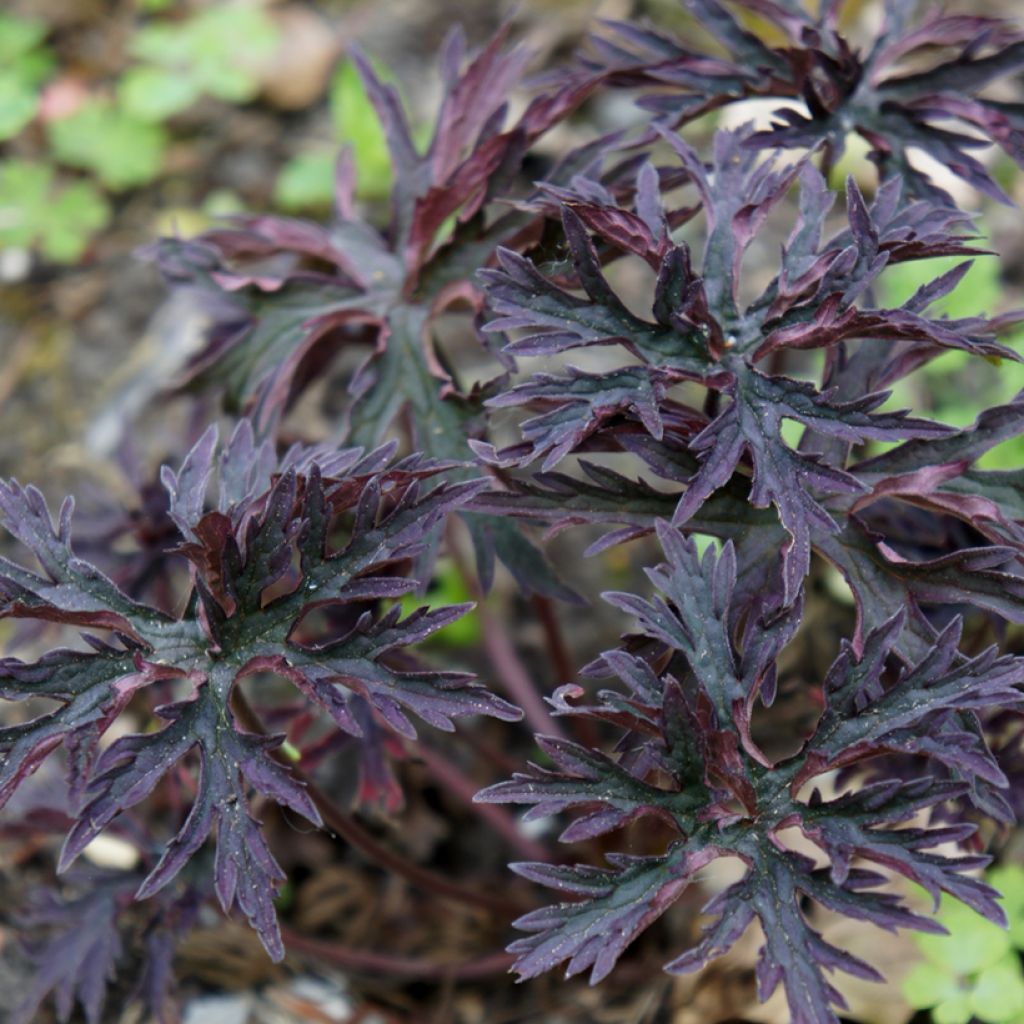

Geranium pratense Dark Reiter
Geranium pratense Dark Reiter
Geranium pratense Dark Reiter
Meadow Cranesbill, Meadow Geranium
Why not try an alternative variety in stock?
View all →This plant carries a 12 months recovery warranty
More information
We guarantee the quality of our plants for a full growing cycle, and will replace at our expense any plant that fails to recover under normal climatic and planting conditions.
From €5.90 for pickup delivery and €6.90 for home delivery
Express home delivery from €8.90.
Does this plant fit my garden?
Set up your Plantfit profile →
Description
The Perennial Geranium pratense Dark Reiter is a variety derived from the meadow geranium, with a striking contrast between the very dark purple tinged with brown of its deeply cut foliage, the dark red of its stems, and the lavender blue of its flowers punctuated with black stamens. This contrast makes the blue very intense, especially in partial shade. It blooms in June and July, forming a surprising chiaroscuro carpet, original and refined. It is a variety with a strong character, but also a perennial for all gardens, highly resistant to mildew and tolerant of drought once well established. However, it prefers partial shade, soft or protected sunlight during the most intense hours.
The Perennial Geranium pratense Dark Reiter belongs to the Geraniaceae family. It is a variety developed from Geranium pratense 'Midnight Reiter' and 'Victor Reiter', but derived from the meadow geranium, which in nature is distributed over a vast territory, from western Europe to western China. This deciduous and robust species is found in wet meadows, on the roadside, in mown meadows. The Dark Reiter variety has a semi-carpeting tufted habit. It reaches approximately 25 cm (10in) in height and 30 cm (12in) in diameter, with rapid growth. It blooms in June and July, and is more floriferous if you regularly remove faded flowers. Its flowers, grouped in cymes, bloom at the top of hairy branched stems, in shades of red to purple. Its flowers, with a diameter of 4 cm (2in), are lavender blue, with pink stamens and almost black anthers, giving character to the heart of the flower. They stand out well from the compound foliage of large polygonal leaves, intensely lobed and toothed, purple, sometimes chocolate, which retain their color throughout the season. They measure 20 cm (8in) in length and are located almost along the sturdy stems.
Like many other perennial geranium species, Geranium pratense and its varieties thrive in a nature-friendly garden and are superb plants, providing nectar and pollen for many insects such as butterflies, bees, bumblebees, etc. It is an ideal plant for a curated garden, in a bed, as a border along a path, or on slopes. The Dark Reiter cultivar truly stands out from the usual varieties; it deserves a special place in a border, along a path, or even in a container on the terrace. For example, pair it with the clematis 'Hagley Hybrid', with its large pink flowers, which it accompanies in flowering, or with tall foxgloves. Also consider Heucheras and Tiarelles in partial shade.
Report an error about the product description
Geranium pratense Dark Reiter in pictures
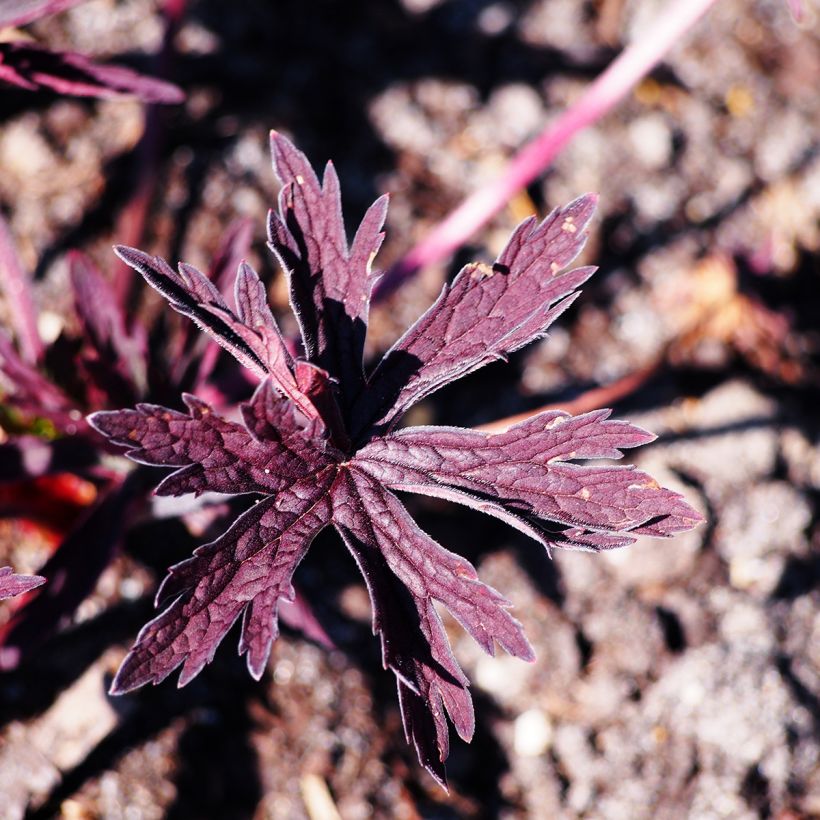

Flowering
Foliage
Plant habit
Botanical data
Geranium
pratense
Dark Reiter
Geraniaceae
Meadow Cranesbill, Meadow Geranium
Cultivar or hybrid
Other Hardy Geranium - Cranesbill
Planting and care
In nature, Geranium pratense thrives in woods and slopes in areas with annual mowing. It prefers a sunny exposure and a fresh, rich, and rather chalky soil. In very heavy soil, mix leaf compost with garden soil. In a dry environment, it generally shows greater sensitivity to powdery mildew. It tolerates partial shade, although it will be less floriferous. After flowering, it is wise to cut back the stems and leaves to ground level to prevent excessive self-seeding and to promote new foliage or even a new flowering in autumn. Dark Reiter prefers gentle sunlight, so place it in the morning sun or give it filtered sunlight or a few hours of shade during the day.
Planting period
Intended location
Care
This item has not been reviewed yet - be the first to leave a review about it.
Rare and collectible perennials
Haven't found what you were looking for?
Hardiness is the lowest winter temperature a plant can endure without suffering serious damage or even dying. However, hardiness is affected by location (a sheltered area, such as a patio), protection (winter cover) and soil type (hardiness is improved by well-drained soil).

Photo Sharing Terms & Conditions
In order to encourage gardeners to interact and share their experiences, Promesse de fleurs offers various media enabling content to be uploaded onto its Site - in particular via the ‘Photo sharing’ module.
The User agrees to refrain from:
- Posting any content that is illegal, prejudicial, insulting, racist, inciteful to hatred, revisionist, contrary to public decency, that infringes on privacy or on the privacy rights of third parties, in particular the publicity rights of persons and goods, intellectual property rights, or the right to privacy.
- Submitting content on behalf of a third party;
- Impersonate the identity of a third party and/or publish any personal information about a third party;
In general, the User undertakes to refrain from any unethical behaviour.
All Content (in particular text, comments, files, images, photos, videos, creative works, etc.), which may be subject to property or intellectual property rights, image or other private rights, shall remain the property of the User, subject to the limited rights granted by the terms of the licence granted by Promesse de fleurs as stated below. Users are at liberty to publish or not to publish such Content on the Site, notably via the ‘Photo Sharing’ facility, and accept that this Content shall be made public and freely accessible, notably on the Internet.
Users further acknowledge, undertake to have ,and guarantee that they hold all necessary rights and permissions to publish such material on the Site, in particular with regard to the legislation in force pertaining to any privacy, property, intellectual property, image, or contractual rights, or rights of any other nature. By publishing such Content on the Site, Users acknowledge accepting full liability as publishers of the Content within the meaning of the law, and grant Promesse de fleurs, free of charge, an inclusive, worldwide licence for the said Content for the entire duration of its publication, including all reproduction, representation, up/downloading, displaying, performing, transmission, and storage rights.
Users also grant permission for their name to be linked to the Content and accept that this link may not always be made available.
By engaging in posting material, Users consent to their Content becoming automatically accessible on the Internet, in particular on other sites and/or blogs and/or web pages of the Promesse de fleurs site, including in particular social pages and the Promesse de fleurs catalogue.
Users may secure the removal of entrusted content free of charge by issuing a simple request via our contact form.
The flowering period indicated on our website applies to countries and regions located in USDA zone 8 (France, the United Kingdom, Ireland, the Netherlands, etc.)
It will vary according to where you live:
- In zones 9 to 10 (Italy, Spain, Greece, etc.), flowering will occur about 2 to 4 weeks earlier.
- In zones 6 to 7 (Germany, Poland, Slovenia, and lower mountainous regions), flowering will be delayed by 2 to 3 weeks.
- In zone 5 (Central Europe, Scandinavia), blooming will be delayed by 3 to 5 weeks.
In temperate climates, pruning of spring-flowering shrubs (forsythia, spireas, etc.) should be done just after flowering.
Pruning of summer-flowering shrubs (Indian Lilac, Perovskia, etc.) can be done in winter or spring.
In cold regions as well as with frost-sensitive plants, avoid pruning too early when severe frosts may still occur.
The planting period indicated on our website applies to countries and regions located in USDA zone 8 (France, United Kingdom, Ireland, Netherlands).
It will vary according to where you live:
- In Mediterranean zones (Marseille, Madrid, Milan, etc.), autumn and winter are the best planting periods.
- In continental zones (Strasbourg, Munich, Vienna, etc.), delay planting by 2 to 3 weeks in spring and bring it forward by 2 to 4 weeks in autumn.
- In mountainous regions (the Alps, Pyrenees, Carpathians, etc.), it is best to plant in late spring (May-June) or late summer (August-September).
The harvesting period indicated on our website applies to countries and regions in USDA zone 8 (France, England, Ireland, the Netherlands).
In colder areas (Scandinavia, Poland, Austria...) fruit and vegetable harvests are likely to be delayed by 3-4 weeks.
In warmer areas (Italy, Spain, Greece, etc.), harvesting will probably take place earlier, depending on weather conditions.
The sowing periods indicated on our website apply to countries and regions within USDA Zone 8 (France, UK, Ireland, Netherlands).
In colder areas (Scandinavia, Poland, Austria...), delay any outdoor sowing by 3-4 weeks, or sow under glass.
In warmer climes (Italy, Spain, Greece, etc.), bring outdoor sowing forward by a few weeks.

































